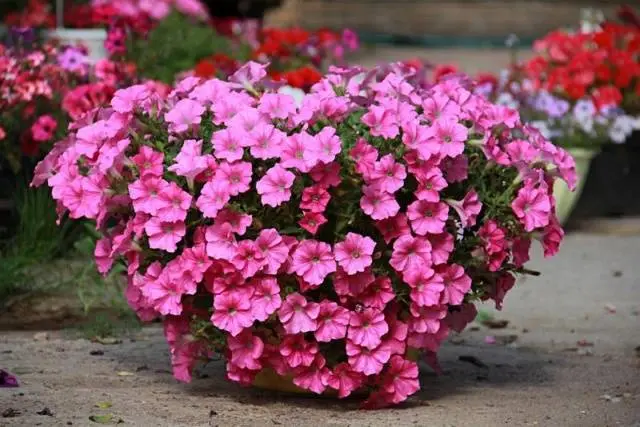Contents
Petunia is one of the most popular garden flowers. Bush or ampelous flowers adorn classic flower beds, stone compositions, flowerpots, boxes and planters, they decorate gazebos, window sills and balconies. The undoubted plus of petunias is the duration of its flowering, which begins in May and ends in late autumn.

How to grow a petunia will be described in stages in this article.
Preparatory work
First of all, you need to decide on the type of flowers. As you know, there are bush and ampel type petunias. The former grow in neat bushes, they are often planted in flower beds and rabatka. Ampelous flowers are distinguished by long shoots falling from hanging flowerpots. Sometimes these varieties are used as creeping ones, then shoots with bright colors become the basis of the flower arrangement.
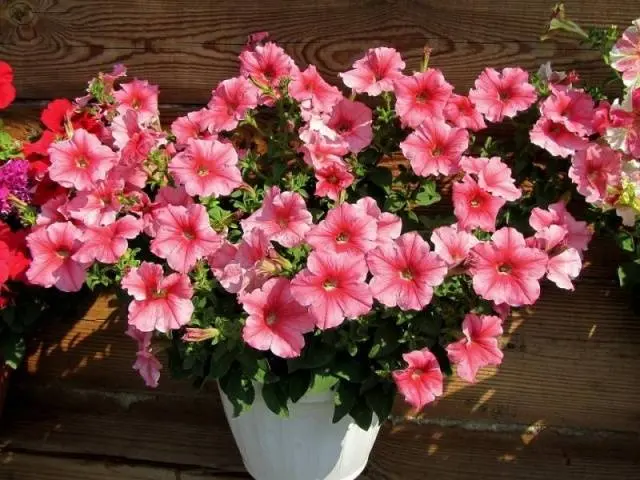
There are many varieties of petunias, which are quite simple to grow – in May you need to sow the seeds in open ground and water regularly. These flowers do not require any complicated care, they are able to grow on their own.
But for those who want to grow a real multi-colored miracle in their garden, there is a long way to go, and it begins with the purchase and selection of petunia seeds.
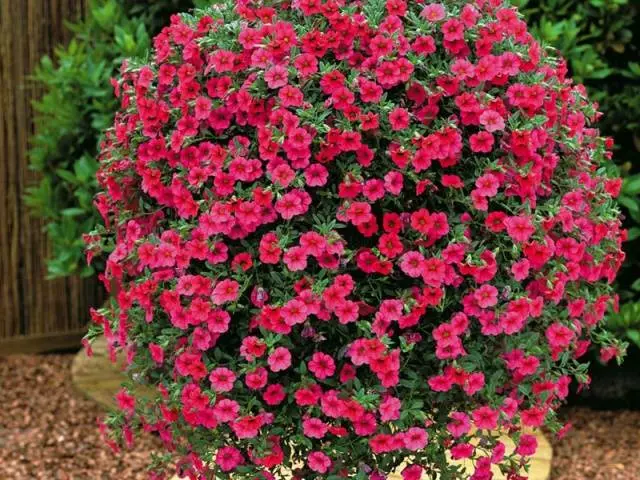
When buying seeds, you need to remember that packaging in 100 or 1000 pieces is a sign of poor-quality seed. Good varieties are distinguished by packages of 5-10 seeds. Usually the seed material of such a petunia is placed in colored granules.
How to plant a petunia for seedlings
In order for the petunia to start blooming as early as possible, it is better to sow the seeds not in open ground, but to pre-grow seedlings in pots or boxes.
This should be done in early March, some varieties of ampelous flowers are sown in February, as they have a longer growing season. Seedling boxes should be shallow, with low sides, so that the plants have enough sunlight.
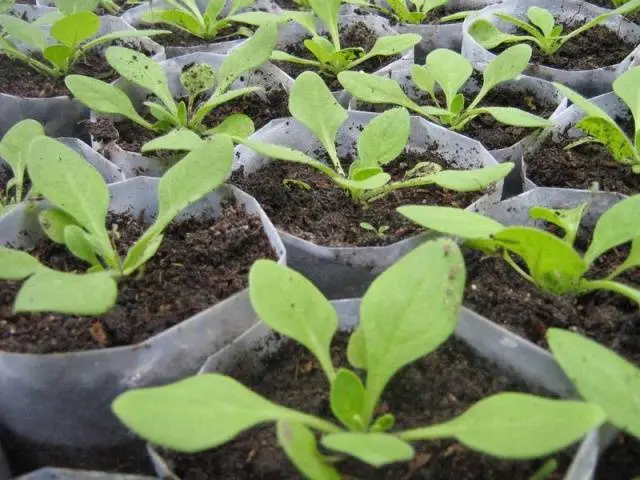
Petunia loves light and loose soils saturated with oxygen. You can buy soil for flower seedlings in a specialty store, but it is easy to prepare at home. For this you will need:
- two parts of sod land;
- the same amount of deciduous soil;
- one part of peat;
- one part of river sand.
All components must be mixed, and the soil for seedlings of petunias is ready.
There is another option: combine three parts of garden soil, three parts of peat and a little of some kind of baking powder (wood ash, sawdust, sand, humus) in a container for petunias.
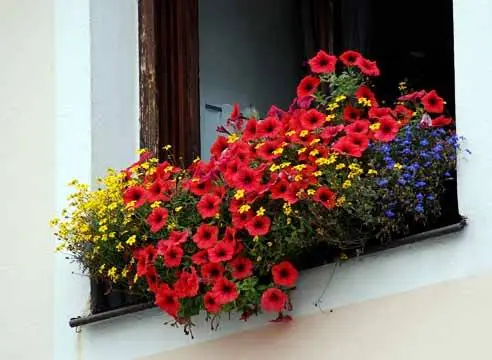
It is advisable to sift the soil for seedlings of flowers, since the seeds of this flower are very small, they may “hang” or not germinate through clods of earth. Pour the sifted earth into containers and pour abundantly with settled water with the addition of manganese. Seeds can be sown the next day.
Small seeds are best mixed with dry river sand – so it is easier to evenly distribute them over the seedling container. If the seeds are granular, they are already clearly visible and very convenient to lay out.
Having distributed the seeds over the container, they are lightly sprinkled with dry sifted soil, and then sprayed with warm water from a spray bottle. Now the container must be covered with a plastic lid, film or glass and placed in a warm place, where the temperature is about 23-25 degrees.
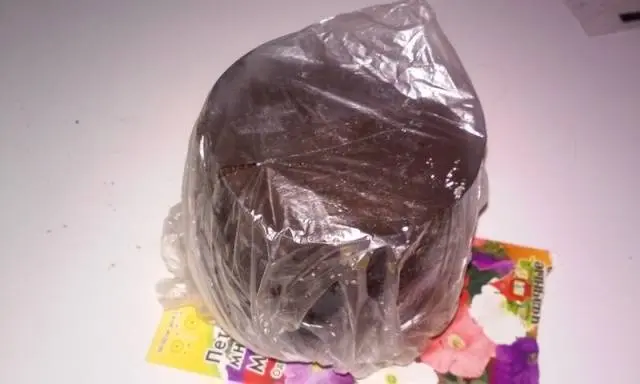
Planting petunias for seedlings is over, now it remains only to wait!
Picking seedlings of flowers
When the first shoots appear under the film (about five days after sowing the seeds), it is necessary to remove the shelter and transfer the seedlings to a cooler place. Now the optimal mode for flowers is 18 degrees at night and about 20-22 in the daytime.
Growing petunias at home requires additional illumination of seedlings, because in February-March there is still very little sunlight – plants can die from its lack. To do this, you can use any fluorescent lamps, just do not need to install bulbs that heat up, excessive heat will destroy fragile flowers.

It is necessary to dive seedlings of flowers when a pair of leaves is formed on each plant. Before transferring to separate containers, the seedlings must be plentifully watered with warm water and left for several hours.
It is necessary to transfer the petunia very carefully – the miniature stems and leaves are very fragile. Plants are taken by the petal, making sure that a clod of earth is held between the roots, and transferred to an individual cup or pot.
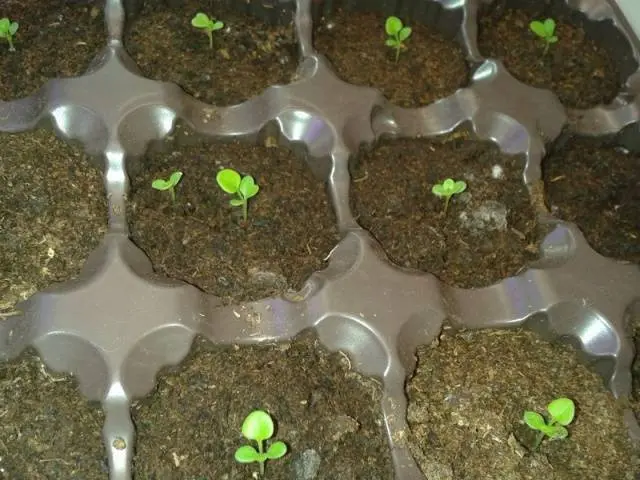
After transplantation, the plants are sprayed with warm, settled water from a spray bottle.
Flowers planted, now you have to wait for spring warmth to move the petunia to a permanent place. In the meantime, plants need regular care and competent watering.
How to care for a petunia while she is at home
Petunia seedlings cannot grow on their own – they need proper care. To grow healthy and strong flowers by May, you must follow a number of rules:
- Water seedlings of flowers only from a spray bottle, using settled water at room temperature. This should be done with a spray gun, since the roots of the petunia at this stage are superficial, they can be easily washed.
- For rapid growth and abundant flowering, seedlings of flowers begin to fertilize two weeks after picking. To do this, you can use any mineral or organic fertilizers dissolved in water for irrigation. Growth stimulants and special additives designed specifically for petunias are also often used. You should not fertilize flowers with mullein – it may contain fungal spores, which is very dangerous for petunias.
- To make the bush beautiful and uniform, flower seedlings need to be pinched, forming stems and side shoots. Only ampel varieties do not need to be formed – their creeping stems will still strive to grow in length.

- Often plants bloom before they can be transferred to open ground. There is nothing wrong with this, on the contrary, you can see with your own eyes the shade of inflorescences, on the basis of which you can draw up a design plan for a flower bed or flowerpot.
- Two weeks before transplanting petunias to a permanent place, they begin to harden. The process is reminiscent of hardening seedlings of tomatoes or peppers – the boxes are simply taken out onto the balconies or outside, gradually increasing the time they spend in the open air.
When the seedling bushes become sufficiently lush and strong, 15-20 buds or inflorescences will form on each of them, the leaves will be a bright green hue, petunias can be taken out into the open ground.
How to plant a petunia in a permanent place
You can plant flowers in open ground only when the threat of spring frosts has passed. In most of the territory of Our Country, it is customary to do this in mid-late May.
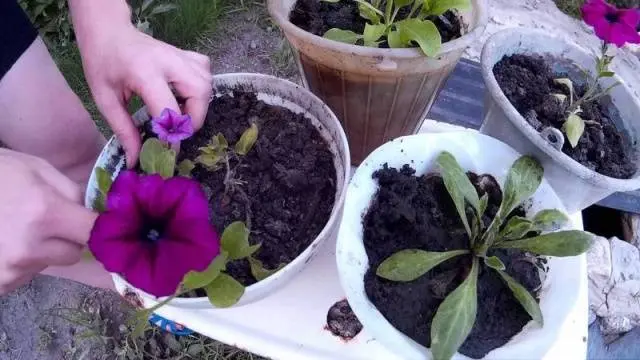
Before planting a petunia in the ground, it is necessary to carefully loosen the soil on the site and prepare holes for transferring flower seedlings. The bushes are carefully transferred to the flower bed and sprinkled with earth to the first leaves. Now you need to water the plants with settled water, trying not to wet the leaves and buds.
It is recommended to plant flowers in cloudy warm weather or in the evening. It is important that there are no scorching sun rays that can burn tender leaves – the petunia will become lethargic and take root poorly.
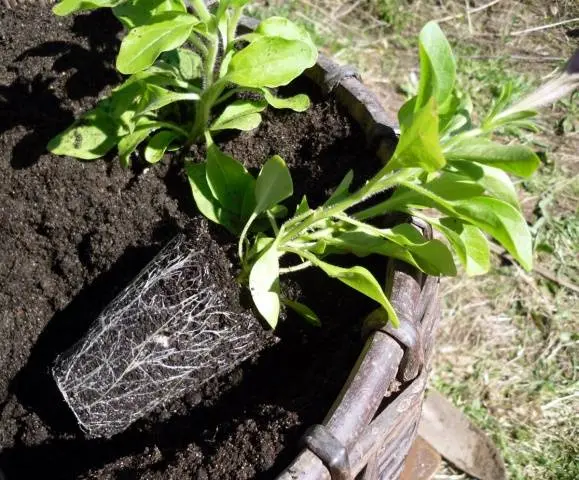
The distance between the bushes should be enough for the normal development of flowers. For varieties with large flowers, 25-30 cm between the bushes is enough, and for petunias with small inflorescences, 15 cm is enough.
If flowers are supposed to be grown in flowerpots or boxes, you need to consider that one adult plant needs at least five liters of soil. So, in a ten-liter flowerpot, for example, you can plant no more than two bushes. If it is supposed to grow petunia in boxes, then the calculation is as follows: there should be a maximum of three bushes in each meter.
How to care for petunias in flower beds and flowerpots
The difference lies in the amount of soil in which the flowers grow. If you have to water the flowers in large flower beds or in flower beds as needed and depending on the weather conditions, then in cramped pots and boxes the moisture will evaporate too quickly – you will have to water the petunia often.
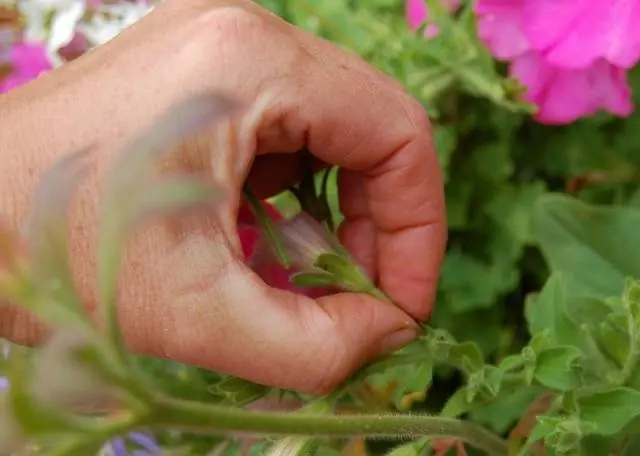
Sometimes it is necessary to water the flowers at least twice a day. It is better to do this in the early morning and evening, when the sun no longer bakes.
Petunia care is not only watering, flowers need other “procedures”:
- It is necessary to continue to pinch the stems and shoots on bush varieties throughout the entire flowering period. Only in this way the bushes will be neat and well-groomed.
- Wilted flowers should be picked off weekly. Leave a few inflorescences if you need to collect seeds for the next season.
- If you fertilize the flowers at least once every two weeks, the inflorescences will be larger and brighter, and the time of flowering of petunias will last.

- Petunia belongs to the plants of the nightshade family, which means that the same diseases that affect potatoes and tomatoes are dangerous for it. You can protect flowers from the “black leg” with Oksadixil, Metalaxil or Mancozeb preparations. This disease appears due to excessive moisture. The same problem leads to infection of petunias with late blight. From this ailment, flowers should be treated with preparations containing copper. Otherwise, the roots of the plants will begin to rot, and the bushes will disappear. Grayish small spots on leaves and flowers can turn out to be gray rot – another fungal disease of ornamental plants. It must be fought with the help of such means as “Dispute”, “Maxim” or “Integral”.
- To prevent infection of flowers, it is enough to maintain a normal level of humidity – the ground between the bushes should not be either excessively dry or too wet.
- In the middle of summer, as a rule, the petunia begins to degenerate – there are fewer inflorescences and leaves on the bushes. To renew plants, cut their stems. On bush plants, 10-15 cm should be left, and ampelous ones are shortened by exactly half.

To preserve the “breed” and prolong the life of a valuable variety of petunias, you can try propagation by cuttings. Cuttings are cut from the bushes of parent plants and placed in a cool place for the winter. In the spring, the cuttings are placed in water until the roots appear, then they are grown as ordinary seedlings – in pots or boxes.
That’s all the recommendations on how to properly grow a petunia in your garden.
Conclusion
Growing and caring for a petunia can be both very simple and quite complex processes – a lot here depends on the variety of flowers, their type, as well as the requirements of the gardener himself.
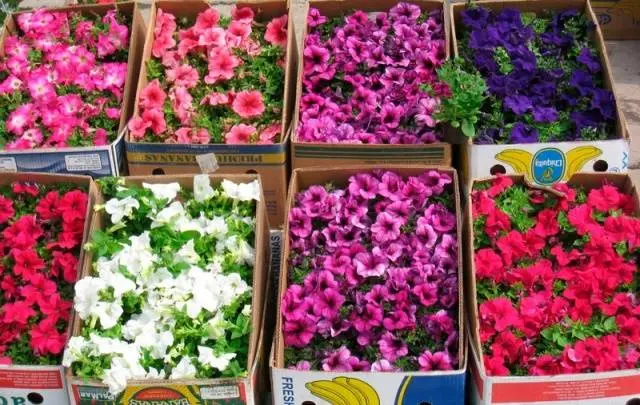
For example, simple varieties with small inflorescences, intended for open ground, flower beds and rabatok, do not need complex care. If the land on the site is fertile enough, and the summer is not dry, you can simply sow the flowers directly into the ground and forget about them. Petunia may well grow on its own, especially when the conditions for its growth are favorable.
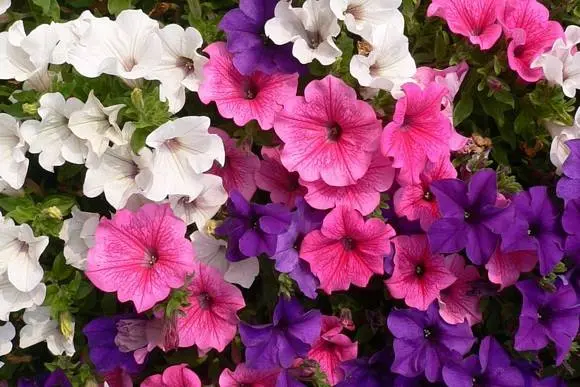
But more decorative varieties, such as ampelous, large-flowered or giant petunias, reaching a height of 150 cm, look especially impressive, but, accordingly, require much more attention from the gardener. They need to be grown in seedlings, constantly fertilized, treated with stimulants and fungicides, regularly watered and pinched petunias. But such efforts are fully justified – petunia of various varieties may well fill the entire flower garden or decorate a spacious terrace, loggia, gazebo.
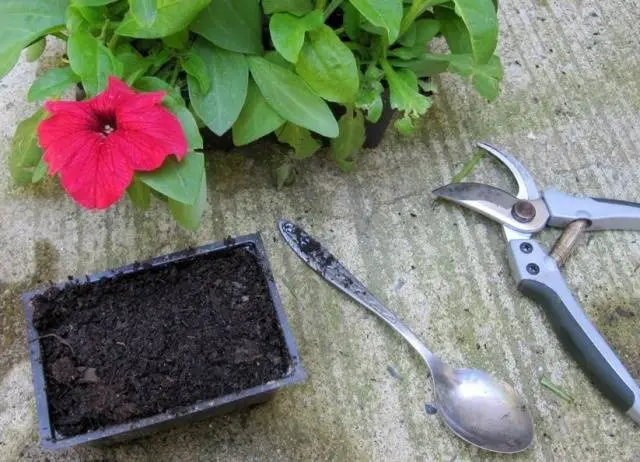
Videos and photos about planting and caring for petunias can help a novice gardener. So, we grow petunias without mistakes and enjoy the result!










